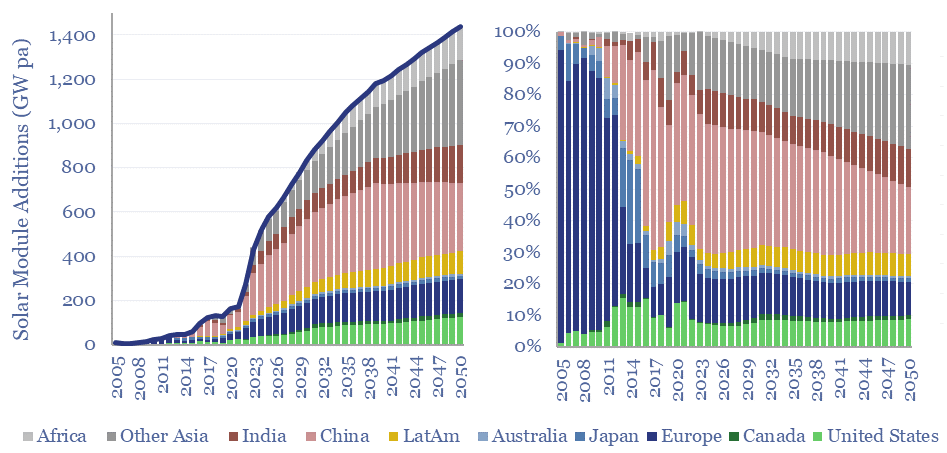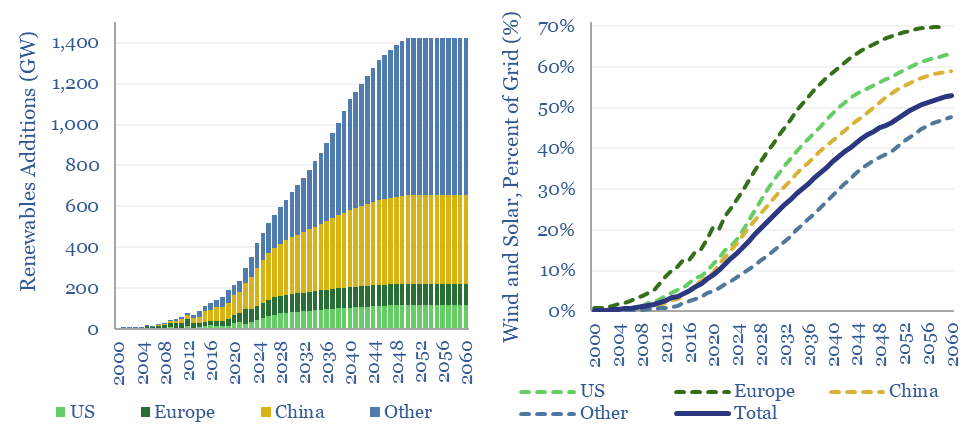This model aims to calculate global wind and solar capacity additions. How many GW of new capacity would be needed for renewables to reach 30% of the global energy mix by 2050, up from 4% in 2022? In total energy terms, this means a 10x further scale up, to 35,000 TWH of useful wind+solar energy in 2050. Gross global wind and solar capacity additions will surpass +1,000 GW after 2035.
Total net solar capacity growth is seen accelerating, and ultimately reaching 700-800 GWe in the 2040s. This is a net number, as 1,100 GWe of new solar installations must counter-act 300GWe of retirements of past installations. In turn, adding 730 GWe of net solar capacity, on an AC-basis, likely requires around 1,250 GWe of new solar panels on a gross, DC-basis. These forecasts are informed by our solar research.


In 2024, we have added more granular solar forecasts to our model, looking region-by-region, covering the US, Europe, Canada, Japan, Australia, China, India, Africa and Other Asia. Global module additions will likely surpass 500GW in 2024, which matters for solar module manufacturers and along the solar supply chain. Our numbers can be stress-tested in the ‘SolarShareForecasts’ tab.

Total new wind capacity growth is seen accelerating more slowly, and ultimately peaking at 140GWe in 2050. Again, this is a net number, as 265GWe of new wind installations must counter-act 125GWe of retirements of past installations. These forecasts are informed by our wind research.


The main data-file also contains breakdowns across four regions (US, Europe, China and ‘rest of world’), a tracker of past growth forecast revisions (which have been revised up by 10x for solar and 3x for wind over the past decade), projections of future load factors, and data on the lifetime of solar assets from technical papers.
Bottlenecks that need to be overcome to reach these incredible growth numbers are not considered in the file, but in our other research, into metals, materials and power grids.
A trend in the 2023 revisions to our numbers has been upgrades for ever-improving solar technologies (e.g. HJTs) and reluctant but steep downgrades for offshore wind.
It is realistic for wind and solar to reach 50-65% shares of the most renewable-heavy grids globally, after assessing where wind and solar will peak.
We would also like to highlight that our projections are simply informed guesses. Everyone is guessing at global wind and solar capacity additions. But we hope it is at least useful to have an auditable data-file of our own guesses.

